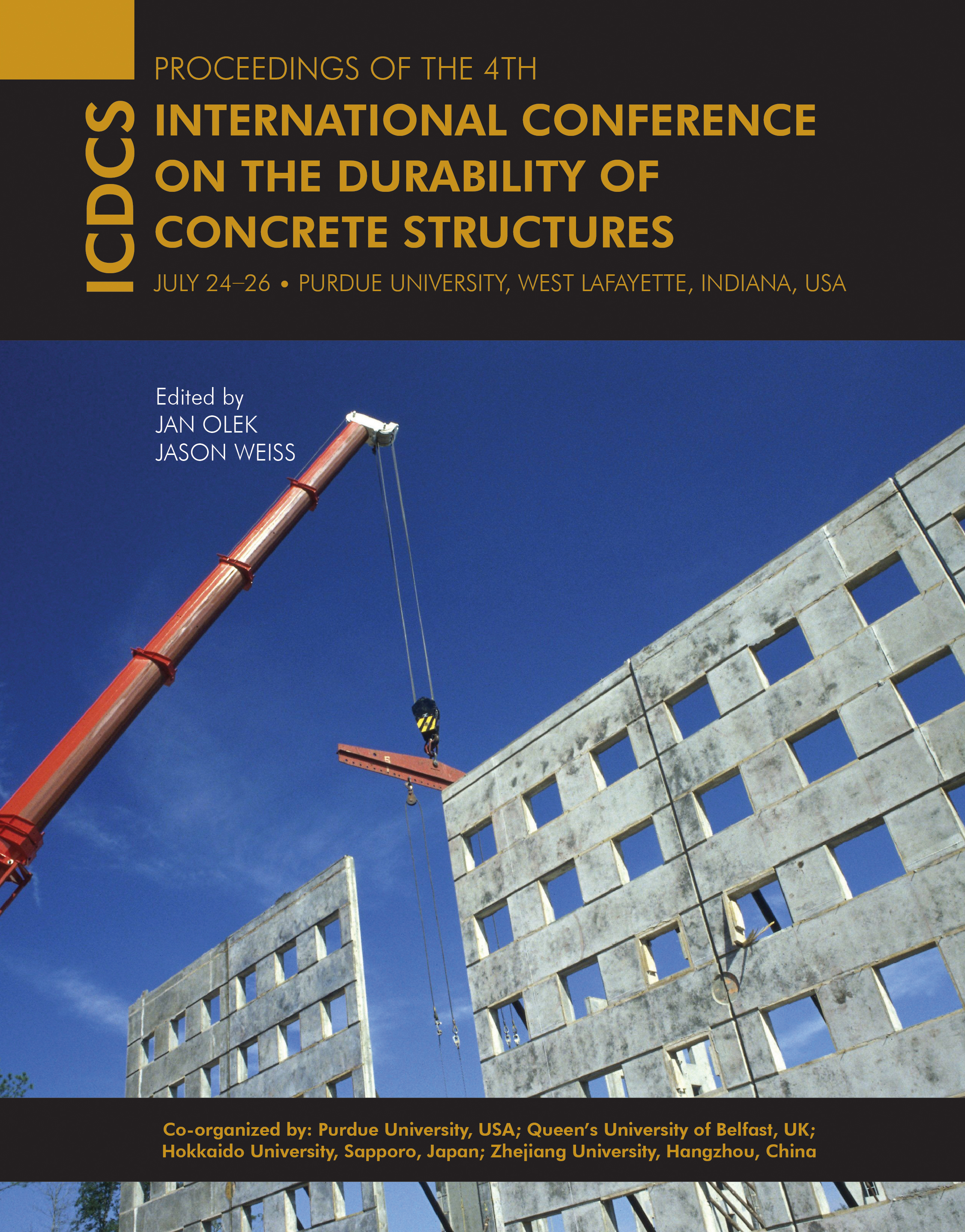Abstract
The correlation of chloride diffusion coefficient and concrete maturity value within 56 days of curing was investigated by the chemically combined water content method, rapid chloride migration (RCM) test, and concrete maturity test. The experimental results showed that chloride diffusion coefficient of concretes decreased not only with increasing curing ages but also with increasing curing temperature, which can promote the hydration degree of cementitous materials. There is a significant correlation between the chloride diffusion coefficient of indoor cured specimens and the concrete maturity value when expressed as a power function (R2 = 0.976). In addition, the calculated values of concrete maturity for outdoor specimens, obtained using the power function, agree well with the measured values. As a result, the measured concrete maturity values can be used to predict the chloride diffusion coefficient of concrete. And then in this project, when the immersed tube tunnels were placed in seawater, the recommended value and the control values of concrete maturity were 21,064 and 13,926°C h-1, respectively. Furthermore, the ages of the tunnels placed in seawater can be appropriately adjusted by calculation when considering the external curing temperature and heat of hydration of cementitous materials.
DOI
10.5703/1288284315421
Included in
The Correlation of Chloride Diffusion Coefficient and Concrete Maturity Value and Its Application in Hong Kong–Zhuhai–Macao Bridge Engineering
The correlation of chloride diffusion coefficient and concrete maturity value within 56 days of curing was investigated by the chemically combined water content method, rapid chloride migration (RCM) test, and concrete maturity test. The experimental results showed that chloride diffusion coefficient of concretes decreased not only with increasing curing ages but also with increasing curing temperature, which can promote the hydration degree of cementitous materials. There is a significant correlation between the chloride diffusion coefficient of indoor cured specimens and the concrete maturity value when expressed as a power function (R2 = 0.976). In addition, the calculated values of concrete maturity for outdoor specimens, obtained using the power function, agree well with the measured values. As a result, the measured concrete maturity values can be used to predict the chloride diffusion coefficient of concrete. And then in this project, when the immersed tube tunnels were placed in seawater, the recommended value and the control values of concrete maturity were 21,064 and 13,926°C h-1, respectively. Furthermore, the ages of the tunnels placed in seawater can be appropriately adjusted by calculation when considering the external curing temperature and heat of hydration of cementitous materials.





